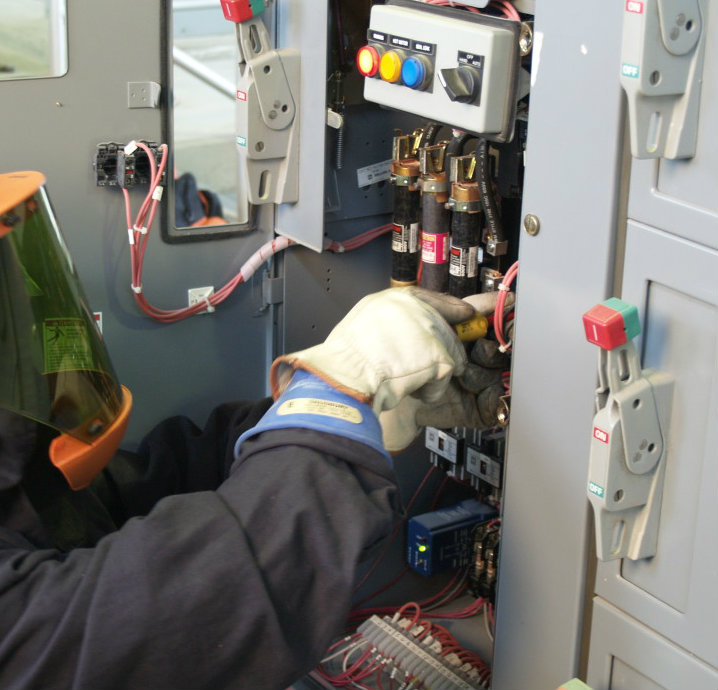Electrical Work Safety

This program establishes the minimum requirements for safe electrical work at TWU and is applicable to the maintenance or service of equipment, machines, or electrical systems. The goal is to reduce the electrical hazards to employees conducting electrical work by requiring such work to be conducted on electrically safe or de-energized equipment whenever possible, and requiring proper procedures and equipment when energized work is necessary.
Hazards
Employees must be protected from BOTH hazards related to live electrical work:
- Electrical Shock
- Arc Flash/Blast
Traditionally, most electrical safety procedures were focused on electrical shock hazards. Increasingly, however, there is recognition of the significant hazards associated with arc flash or arc blasts. An arc flash/blast can reach temperatures of 35,000° F, vaporize metal, ignite clothing from several feet away, and toss employees across the room!
However, this does not minimize the risk of electrical shock; just half of an Amp (or 500 milliAmp) is enough to stop a person's heart.
Requirements
Electrical work involving exposure to energized electrical conductors or circuit parts must be avoided to the maximum extent possible. This includes any work where equipment or electrical systems are not in an "electrically safe work condition". In other words, electrical work should be conducted in accordance with the Lockout Tagout Program (PDF), except under limited exceptions. If electrical work must be conducted on or near energized electrical conductors or circuit parts, an Energized Electrical Work Permit justifying why the work cannot be completed in an electrically safe work condition, and listing required safety measures, must be issued before the work may proceed.
- Electrical Work Safety Program (PDF)
- Electrical Work Safety Permit (PDF)
- Electrical Work Safety Permit (digital version)
Page last updated 4:04 PM, May 6, 2024